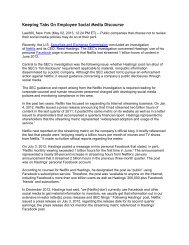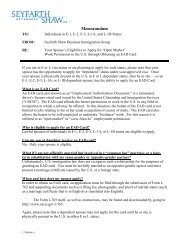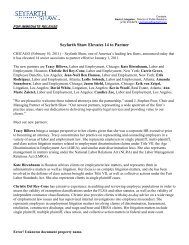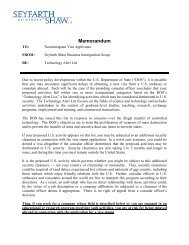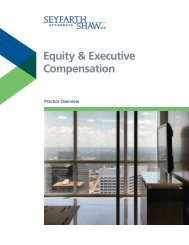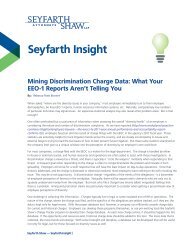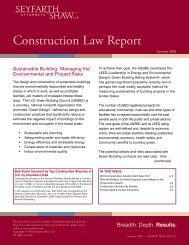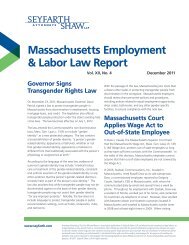Litigating California Wage & Hour and Labor Code Class Actions
Litigating California Wage & Hour and Labor Code Class Actions
Litigating California Wage & Hour and Labor Code Class Actions
Create successful ePaper yourself
Turn your PDF publications into a flip-book with our unique Google optimized e-Paper software.
Another employer policy fomenting class actions, has been a “floating holiday” policy that allows<br />
employees to take a paid day off at the employee’s discretion but does not treat the floating holiday<br />
as vacation–i.e., the employee who does not use the floating holiday is not credited with a day of<br />
vested vacation time, but instead simply loses the opportunity for a paid day off. The DLSE has<br />
opined that an employer may have a use-it-or-lose-it policy with bona fide “holidays,” but only when<br />
the holiday is tethered closely to a specific event. For example, an employer may give employees<br />
Martin Luther King, Jr. Day as a paid day off, on a use-it-or-lose-it basis. But where “holiday” pay<br />
can be claimed on any day, at an employee’s discretion, the DLSE views it as disguised “vacation”<br />
pay, <strong>and</strong> has opined that an employer must treat any such holiday pay as vested vacation time. 190<br />
Based on this announced interpretation of the law, numerous class actions have been filed against<br />
employers who have a use-it-or-lose-it policy with respect to floating holidays. To date, no court<br />
decision has adopted or rejected the DLSE’s interpretation.<br />
VIII. Waiting Time Penalties<br />
A. Generally<br />
Many class actions assert, on behalf of class members who are former employees, claims<br />
for “waiting time penalties” under <strong>Labor</strong> <strong>Code</strong> Section 203. 191<br />
Under <strong>California</strong> law, all wages due must be paid at the time of termination, unless the<br />
employee quits without notice, <strong>and</strong> then within seventy-two hours of termination. 192 When<br />
wages of a terminated employee are not timely paid, the employee’s wages continue, as a<br />
penalty, until paid or up to thirty days, whichever is shorter. Thirty days of penalties means<br />
thirty consecutive calendar days, including Saturdays, Sundays <strong>and</strong> holidays (typically<br />
equivalent to six weeks of pay), rather than simply one month’s pay. Each calendar day<br />
that passes before the employer pays all wages owed triggers an additional day of<br />
penalties at the employee’s regular daily rate, even if the employee is not normally<br />
scheduled to work on all of these days. 193<br />
On its face, the waiting time penalty provision reads as though it were designed to apply<br />
when an employer fails to give a terminating employee the employee’s final paycheck. The<br />
<strong>Labor</strong> Commissioner, despite regulations providing that a good faith dispute precludes the<br />
190<br />
191<br />
192<br />
193<br />
DLSE Enforcement Manual § 15.1.12, et seq. (“there must be an objective st<strong>and</strong>ard by which it can be established that<br />
the leave time is attributable to holidays, sick leave, bereavement leave or other specified leave.”)<br />
The statute of limitations period on Lab. <strong>Code</strong> § 203 claims is three years, regardless of whether only penalties are<br />
sought or whether underlying wages are also sought in same action. Pineda v. Bank of America, 50 Cal. 4th 1389,<br />
1401 (2010), overruling McCoy v. Sup. Ct., 157 Cal. App. 4th 225, 233 (2008).<br />
Lab. <strong>Code</strong> § 203.<br />
Mamika v. Barka, 68 Cal. App. 4th 487 (1998).<br />
Seyfarth Shaw LLP | www.seyfarth.com <strong>Litigating</strong> <strong>California</strong> <strong>Wage</strong> & <strong>Hour</strong> <strong>Class</strong> <strong>Actions</strong> (12th Edition) 46



